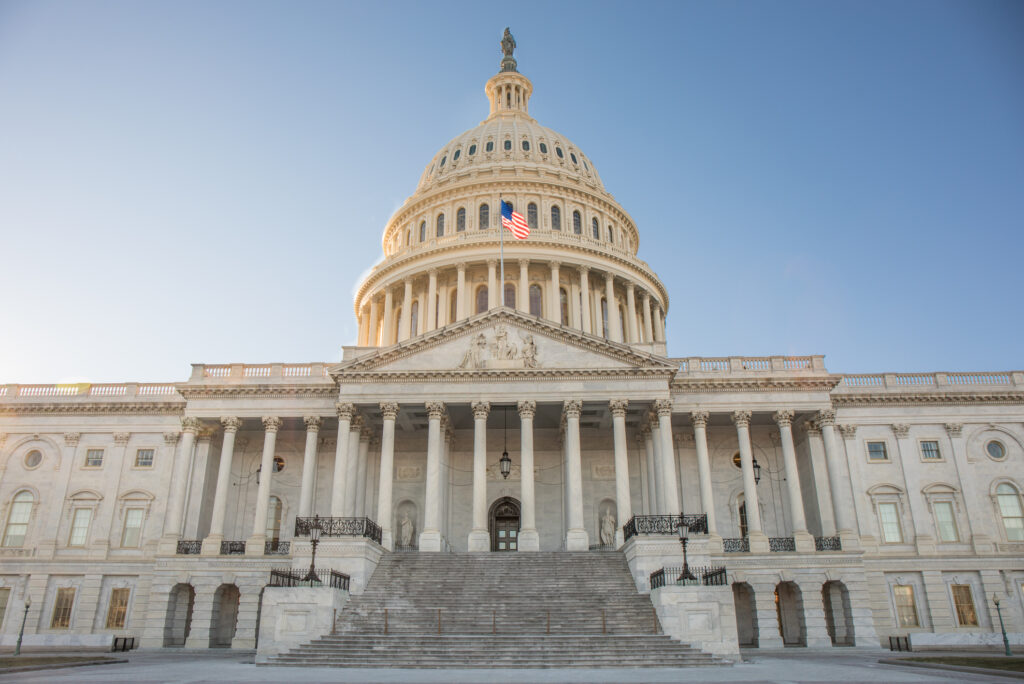ACF: How Early Learning Programs Align With Executive Order on School Choice

Last week, the Administration for Children and Families (ACF) in the U.S. Department of Health and Human Services (HHS) issued two Information Memorandums (IM) and one Dear Colleague Letter addressing how key programs serving children and families can and do meet the goals of the President’s executive order (EO) Expanding Educational Freedom and Opportunity for Families. Signed on January 29th, this EO seeks to expand school choice through federal programs. Among other directives, the EO charged HHS with issuing guidance on how states can expand educational choice and support families who choose educational alternatives to governmental entities. It is important to note that Information Memorandums and Dear Colleague Letters are not regulatory guidance. Here’s an overview of the notices related to Head Start, CCDBG, and TANF.
Head Start Information Memorandum: Expanding Educational Freedom and Opportunities for Families in Head Start Programs
The Office of Head Start’s IM outlines the critical role their programs play in the promotion of parent choice when selecting the early care and learning options that best meet the needs of families and their children. Head Start has a demonstrated history of encouraging programs to align the empowerment and engagement of families with the needs of communities through various provisions within the Head Start Act and the Head Start Program Performance Standards (HSPPS). Given this history, this IM acknowledges that there is a strong foundation to build upon to increase parental choice in key ways.
Specifically, this IM encourages Head Start programs to facilitate parent choice in three ways:
- Actively participating in state and local efforts to coordinate early care and education (ECE) enrollment and services and promote access to a variety of ECE options. Head Start is an important part of state and community mixed delivery ECE systems. Head Start programs can be located in centers, family child care homes, faith-based organizations, public schools, and even a child’s own home. Programs are already encouraged to establish collaborative relationships with other entities in their communities, including elementary schools, child care centers, and more. They also must actively participate in coordinated systems at the state and local level. The IM explains how engagement in these efforts helps ensure that parents have a full picture of their options in a mixed delivery system. The IM specifically encourages programs to participate in coordinated enrollment systems, which can efficiently connect families to ECE options that best meet their needs.
- Engaging families to determine, develop, and improve their program and consider how their program can respond to family needs and promote family choice. The input of the community and families is central to Head Start and the IM acknowledges multiple ways in which HSPPS supports this. Notably, families are required members of a program’s policy council, a critical way they gather family input to continually improve services. The IM encourages programs to take further steps to include families, for example, by engaging families in the community assessment process as a method to better understand the variety of parent options and community needs. The IM also mentions that programs are required to assist families in the transition to kindergarten, which includes helping families understand the education options in their community.
- Re-examining and evaluating community partnerships to determine how they can better support family choice, including through connections to faith-based settings. Head Start programs are required to establish ongoing collaborative relationships and partnerships with community organizations that support families’ and children’s needs. This IM recommends programs re-examine these partnerships to determine how they support family choice. Among other recommendations, the IM encourages the broadening of community partnerships to better suit family needs and preferences, such as partnering with faith-based organizations if parents are interested in faith-based instruction. The IM also encourages programs to consider how they can layer and braid funds (such as federal CCDF and IDEA funds, as well as state and local funds) to support broader access to services.
Child Care and Development Block Grant (CCDBG) Information Memorandum: Expanding Educational Freedom and Opportunities for Families
The Office of Child Care’s IM provides an overview and guidance on how the Child Care and Development Fund (CCDF) program – which includes CCDBG – can provide parents choice in their child care arrangements. A tenet of CCDBG is that it gives parents the right to choose the best early educational setting for their children, whether it be public, private, faith-based, or home-based. As written, a core purpose of the law is “to promote parental choice to empower working parents to make their own decisions regarding the child care services that best suit their family’s needs.” This type of parent choice is important in child care and early learning, as we know that different children thrive in different settings and that each family has unique needs and preferences in these early years.
The IM states that only 2,730 faith-based centers in the U.S. accept CCDF certificates. It encourages Lead Agencies to take specific steps to encourage participation of faith-based providers, such as offering technical assistance to help them meet licensing standards and outreach in religious networks. Similarly, the IM calls for ensuring that there are a range of providers available for eligible families with school-age children, as CCDBG is used for out-of-school time for children up to age 13. The guidance suggests partnering with private schools and allowing homeschooling families to use subsidies for care during non-core school hours.
Currently, eligible families use CCDBG subsidies to help cover the cost of care with participating providers. The subsidies either go directly to the family as a certificate/voucher, who then finds a provider that accepts it, or contracts are established with participating providers who agree to serve a certain number of families. This IM encourages states to prioritize the use of vouchers for maximum flexibility. However, the IM states that in 2022, 96% of children receiving CCDF were served through certificates or vouchers.
The IM explains that full choice requires parents understanding what their options are. States are encouraged to streamline application procedures and to provide clear information to families, specifically on faith-based care and relative care options. It makes clear that the law prohibits CCDF funds from being used for education services for students in grades one through 12 during the traditional school day. CCDF funds cannot be used for any activity in which children receive academic credit, including tuition for private schools. The IM concludes with an overview of what types of child care/settings are allowed under the law, what is required of participating providers, and what flexibilities states have.
Temporary Assistance for Needy Families (TANF) “Dear Colleague”: TANF Alignment with EO 14191 on Expanding Educational Freedom
ACF’s Office of Family Assistance (OFA) issued a dear colleague letter explaining how TANF funds and state maintenance-of-effort (MOE) funds can be used to support early learning and care.
Since 1996, federal regulations and guidance have allowed TANF funds to support or expand a broad range of child care and early learning initiatives in states. Funding for children’s educational activities are in line with TANF’s Purpose 1: to provide assistance to needy families so that children may be cared for in their own homes or in the homes of relatives. Access to reliable early learning and child care opportunities provides working families with better job stability and overall economic security. States can currently transfer up to 30 percent of their TANF funds to CCDBG and use TANF funding to support state preschool and other early learning programs. Here’s a high-level overview of how states are currently using TANF dollars for these programs.
The letter emphasizes that states can use TANF dollars to support families in accessing private and faith-based education and care options, to the same extent as state-operated public education programs. The letter reference’s ACF’s prior guidance on this topic: Funding Childhood Education, School Readiness, Kindergarten and Other Public Education Programs. It also explains that TANF funds cannot be used to replace “general costs of government,” which means the funds are prohibited from covering activities that are part of free public schools.
It is important to remember these correspondence do not establish requirements or supersede the existing statutes on Head Start, CCDBG, or TANF. They serve as an opportunity for HHS to ensure states are supporting parental choice and quality for all qualifying children from birth to age 13 in ways that are already permitted under the law. Highlighting uses of the programs that will help families succeed is a welcome exercise and we commend HHS for these comprehensive and thoughtful policy memos.
Subscribe to FFYF First Look
Every morning, FFYF reports on the latest child care & early learning news from across the country. Subscribe and take 5 minutes to know what's happening in early childhood education.



